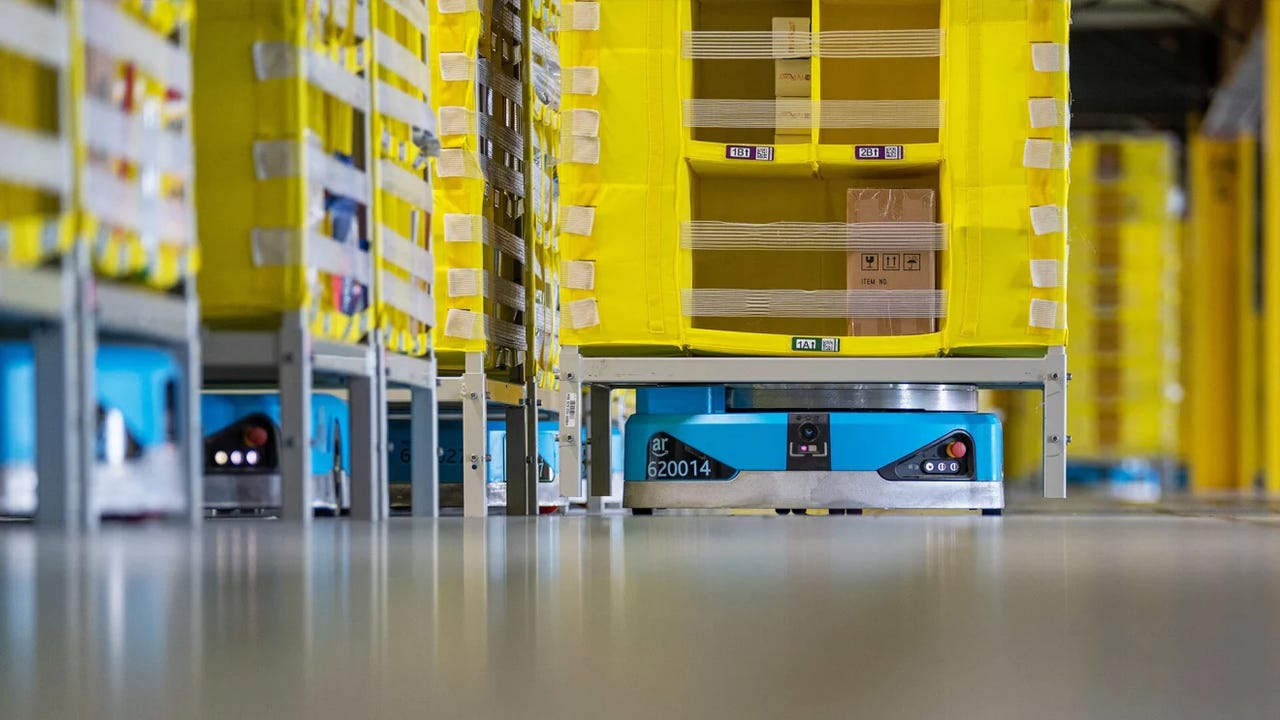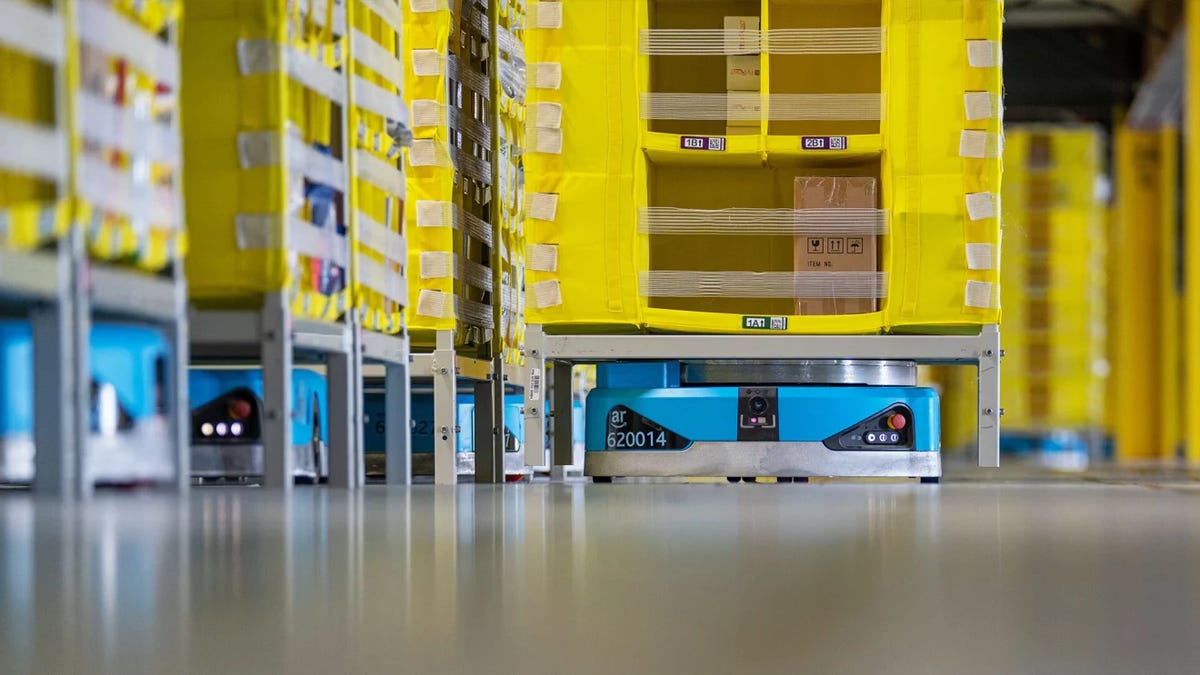
Amazon will soon deploy the Proteus robot in fulfillment and sorting centers. Amazon
What’s the state of retail and e-commerce? When it comes to fulfilling orders, it’s clearly gone to the robots, and there’s no turning back.
That’s the conclusion of a new state of the industry report by Berkshire Gray. The reason will be familiar to those who have tracked industries like durable goods manufacturing, agriculture, and commercial trucking: A new generation of workers don’t want jobs with low pay, low stability, and high burnout. While this can be framed through a number of lenses (the one that always makes me chuckle is “they’re lazy!”), the unquestionable outcome is a massive turn toward automation, specifically robots.
Also: Urbanization is driving new demand for construction robots
“Labor issues across industries continue to vacillate, but unlike the temporary shortages seen in other industries, continued e-commerce growth and shifts in generational employment preferences are uniquely impacting the fulfillment industry and predicted to lead to long-term labor shortages that will only compound in the coming years,” said Steve Johnson, president and COO at Berkshire Grey. “In addition to compensation strategies, companies need to utilize robotics automation in order to stay ahead of this demographic shift. Not only is it a huge attractor for young talent due to the increased safety and specialized upskilling it enables, it is also a game changer in terms of cost reduction, throughput and ROI.”
Also: Yes, robots have taken over (So why don’t we care?)
Nearly three-quarters (71%) of executives who responded to Berkshire believe robotics automation is necessary. That’s driven in part by changing labor dynamics and in part by consumer trends that are straining online retailers. For example, free returns are becoming the norm, with a similar percentage of executives (72%) believing they would lose customers if they didn’t offer them. Couple that with a demand for increasing delivery speeds and sizable increase in return rates (80% of executives saw an increase, requiring increased headcount), and it’s clear retailers are in a kind of trap: They can’t hire easily and they simultaneously need to cut costs and increase efficiency.
Those, friends, are fertile conditions for robots. There’s been a massive increase of executives who believe automation is now the norm in fulfillment (growing by nearly 43% since 2019). Of those using robots, nearly all (85%) will invest more in automation.
Also: No really, robots are about to take A LOT of jobs
Here’s why this matters to the consumer: In the short term, it’s going to enable the comfort and convenience we’ve so quickly grown to demand. In the long term, however, no one has the slightest inkling what an increase in automation in sectors as varied as warehousing, fast food, construction, and manufacturing will do to the blue collar leg of a national economy that in modern times has always employed a sizable number of lower paid workers.
Optimists argue that increased productivity due to automation will yield to new opportunities, but that works only in a relatively fair market, not one where abundance tends to accumulate at the top. With the country facing a possible recession, the growing lack of a availability of lower paying jobs may soon catch up to the strong labor market workers have enjoyed for several years. Automation hatched in relatively sunny times could create a real predicament in turbulent times ahead.
Also: How to get a job in a recession
Somehow, there is general agreement that e-commerce will continue to grow at a record pace. The market is set to increase from $3.3 trillion to $5.3 trillion by 2026.
